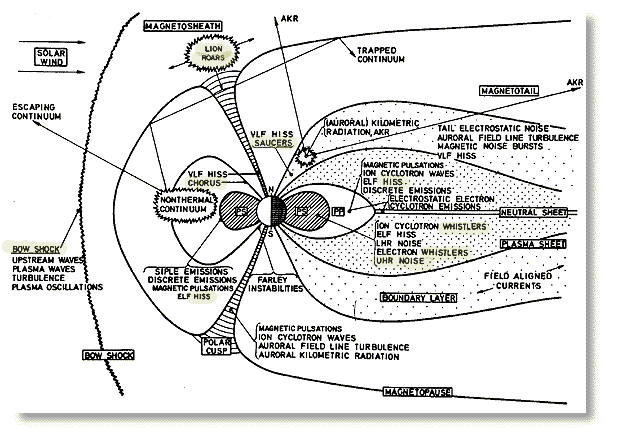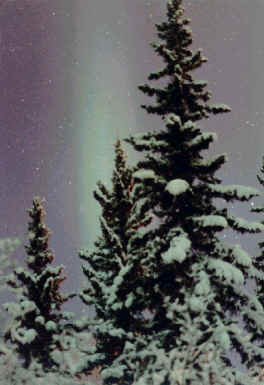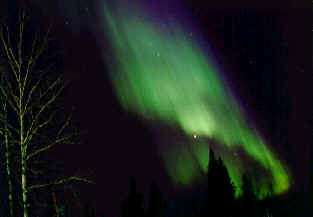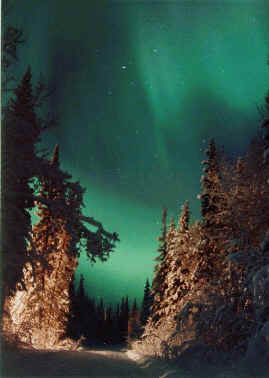Planetary Magnetic Fields
Much of the following overview is adapted from the website http://www.science.nasa.gov/ssl/pad/sppb/edu/lionroar/
When the
space age began in the late 1950s, satellites with scientific equipment on board began
investigating the near-Earth environment of space, and an understanding of some of the
sounds heard on Earth began to develop.
When the solar
wind comes to the Earth, it meets the Earth's magnet and most of the tiny particles are
pushed around the Earth because of this magnet. They begin their journey around in a curve
called the "Bow Shock". Just like water makes a curved wave in front of a boat,
the solar wind makes a curve in front of the Earth. The particles then follow a path that
goes around the Earth in a sort of cover or sheath. This curve is called the
"magnetosheath".
- Not all the solar wind particles
go around the earth by way of the magnetosheath. Some get through the bow shock and get
caught between the Earth and the bow shock. These particles mix with other particles that
come up from the Earth's ionosphere to fill the magnetosphere. They are pushed sideways so
they are close to the North or South Pole. There they cause the sounds on radio and in
electronic equipment.
- There are special places in the
magnetosphere where the plasma (charged particles) and the magnetic field of the
Earth make light and cause sounds on telephones and radios. The first sounds we heard were
caused by the plasma bouncing back and forth in the magnetic field of the Earth. The
whistler sounds were caused in the part of the magnetosphere shown below. The plasma here
causes the high pitched sounds to be heard before the lower pitched sounds so that what
you hear sounds like a whistle.

- In the region called the
"lion roars region" above, the plasma bounces back and forth causing the radio
and telephone to sound like a roaring lion. Here the signal lasts about 2 seconds and has
a low tone or pitch. It sounds like the following:
In
summary, the detailed structure of the Earth's magnetic field, and its interaction with
the Sun, can be studied by listening with the proper instruments, both in the optical:
  
and in the radio:
|
Consider
the significance of these results
By listening, through radio
techniques, one can study various regions of the Earth's magnetosphere. Similar
studies from the ground and from spacecraft reveal information about magnetospheres around
other planets!
The Voyager 1
spacecraft, for example, detected the magnetosphere around Jupiter as it approached the
planet, and crossed the bowshock of the Jovian magnetosphere:
Additionally, the
Voyager 1 spacecraft detected sounds, called "chorus", that are also similar to
those detected for the Earth. Again, see if you can hear similarities to the Earth's
sounds.
It is
possible to be more quantitative, by plotting the frequency of the sounds as a function of
time. By doing this, a detailed understanding of the physical processes occurring in
a planet's magnetosphere can be obtained.
|